 Cadmium in Phosphate Fertilizer Part 1: The History
09. 30. 2018
#Fertilizer feedstock
Cadmium in Phosphate Fertilizer Part 1: The History
09. 30. 2018
#Fertilizer feedstock

For more than six decades, agribusiness professionals have known about the problem of cadmium in phosphate fertilizer. It is a problem caused by naturally occurring amounts of the heavy metal in the rock phosphate that forms a key raw material in the manufacture of many fertilizers.
During those 60+ years, there have been many attempts in the EU to categorise, limit, define, regulate, and control the amounts of cadmium that leaches from phosphate fertilizers into the ground, reducing agricultural returns and restricting soil health.
With the EU currently (Sept/Oct 2018) holding crucial meetings to decide the correct path for Europe to take, it is worth having a brief look at the history of this contentious issue, and also to outline the options available for the future of phosphate fertilizers.
What to Do About Cadmium in Phosphate Fertilizer?
The science is clear: High levels of cadmium in fertilizer is bad for the soil, bad for wildlife, and bad for humans consuming food contaminated with traces of cadmium.
Understanding the situation, the EU first began discussing solutions in 1997. They wanted all industries to be more sustainable, so the politics of solving the problem of cadmium in phosphate fertilizers began.
Progress was slow at first, but as scientific understanding of mankind’s impact on the environment grew, so grew the ‘greener’ political will. All industries needed to analyse their supply chains and waste management systems to have less impact on the planet, and this included agribusiness.
As the news website Euractiv reports, “As part of the EU Circular Economy Package, the European Commission presented in March 2016 new rules on organic and waste-based fertilisers in the EU with an objective to boost the use of recycled materials in fertilizer production.”
With regards to cadmium in fertilizer, proposed EU legislation has two central goals. As Andrea Ulrich, PhosAgro’s Head of Government Affairs and Compliance based in Zurich notes, “First, it aims to allow free movement of all fertilizers, including by levelling the playing field between recycled fertilizers (from waste-based phosphorus sources) and mineral fertilizers (from primary phosphate rock sources). Second, it aims to set harmonized environmental standards to minimize any adverse health and environmental effects.”
To achieve these goals, there were several options available to legislators. These included;
- Higher taxation on higher cadmium level fertilizers
- Voluntary provisions
- Improved soil management
- The declaration of vulnerable areas
- Setting a maximum permissible level of cadmium
The consensus (both then and now) is that the last option (setting a maximum limit) is the most effective and likely to succeed. However, this is where the consensus ends, as no one can agree what level of cadmium is acceptable.
AG CHEMI GROUP is a supplier of industrial raw materials for fertilizers, including potassium sulfate and potassium carbonate.


If you are interested in fertilizer feedstocks, or need agrichemical raw materials, then please contact the friendly, multi-lingual sales team, or take a look at the AG CHEMI GROUP catalogue.
As Euractiv observes, “The EU executive aimed to introduce harmonised rules on fertiliser production, including limits on contaminants such as cadmium. However, the final limit of cadmium sparked an intense debate in trilogue meetings between the Commission, Parliament and member states.”
Risk assessment reports from eight member states plus Norway argued that a level as high as 60 mg/kg P2O5 would mean the long-term accumulation of the metal in the soil. Whereas, a limit of 20 mg Cd/kg P2O5 would prevent the build-up of toxic levels, and even allow for some decrease after 100 years or so.
However, many technical and regional factors affect the rate that cadmium builds up, with soil quality, levels of fertilizer used, rainfall, and climate all playing a role.
The result being that different countries ended up preferring different legal limits. This is evident in the great disparity of legal limits for cadmium in phosphate fertilizer around the world.
As Ulrich observes, “Probably the oldest and still strictest limit value was established by Switzerland in 1986, at 21 mg/kg P2O5.
Switzerland also established a legal obligation in 2016 to recycle P from its waste streams within the next 10 years.” Observing that the rules may yet be even harsher, as, “A current legislative proposal for Cd limits in these recycled products foresees an even stricter limit than that for mineral fertilizers, at 11 mg/kg P2O5, which may enter into force as early as January 2019.”
In a recent report published on the peer-reviewed Science Direct, Ulrich also compiled global data on the different permissible limits of cadmium.
With so many different levels around the world, it is clear that finding a consensus among the EU’s 27 member states will take a lot of politics, economics, and hopefully science. Environmentalists will have their say, as will fertilizer manufacturers and agribusiness suppliers. Lobbyists will certainly be there.
Which brings us to our current situation: differing political stances, differing geopolitical influences, varying concerns and priorities over agriculture, and ultimately, a difference of opinion over the level of cadmium in phosphate fertilizer.
Click to read Cadmium in Phosphate Fertilizer Part 2: The Present.
Photo credit: Science Direct, 5Nplus, flickr, SoilsMatter, RCS, & ImgKid